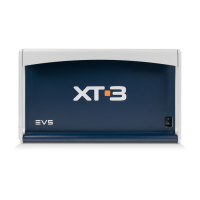These performances are also limited by the disk bandwidth available from the EVS server
where the clips are stored. To prevent freeze issues and to maximize network bandwidth
efficiency, priority levels have been implemented in the following order, from the high to
the low priority:
1. Play requests
2. Search/Browse and Live (E2E) requests
3. Copy requests.
Troubleshooting
1. If the network does not start up properly although all machines are apparently
configured properly and Multicam is actually started on all of them, check that
selected cables to connect all EVS servers are suitable and not too long to operate.
2. If the connection cannot be established, please make sure that all equipments are set
to the same speed and connected to the non-relay connectors.
3. Once the network has been established, if the EVS server acting as the network
"Server" is disconnected or shut down, another server will automatically be assigned
to act as a new network "Server". The next machine to be automatically assigned as
new network server is the one with the highest serial number in the SDTI network.
5.7. Gigabit Network
5.7.1. Functional Overview
The Gigabit connection makes it possible to transfer video and audio material from your
XT3 server to external systems via the TCP/IP network.
The external systems can be the following:
• A storage system or an archiving system, such as XStore or XF2.
• A non-linear editing system, such as Xedio, Apple Final Cut Pro, or Avid.
However, the external systems cannot read the raw files coming from a XT3 server. For
this reason, XTAccess is used as a “gateway” between your server and the IT world. It
takes up the role of gateway used so far by XFile/XStream as it creates file formats
compliant with external systems. In this architecture, the Xsquare application plays the
role of XTAccess orchestrator on the Gigabit network, communicating via the PC LAN
connection.
HARDWARE TECHNICAL REFERENCE MANUAL XT3 Server 11.02
5. Hardware Installation and Cabling 59

